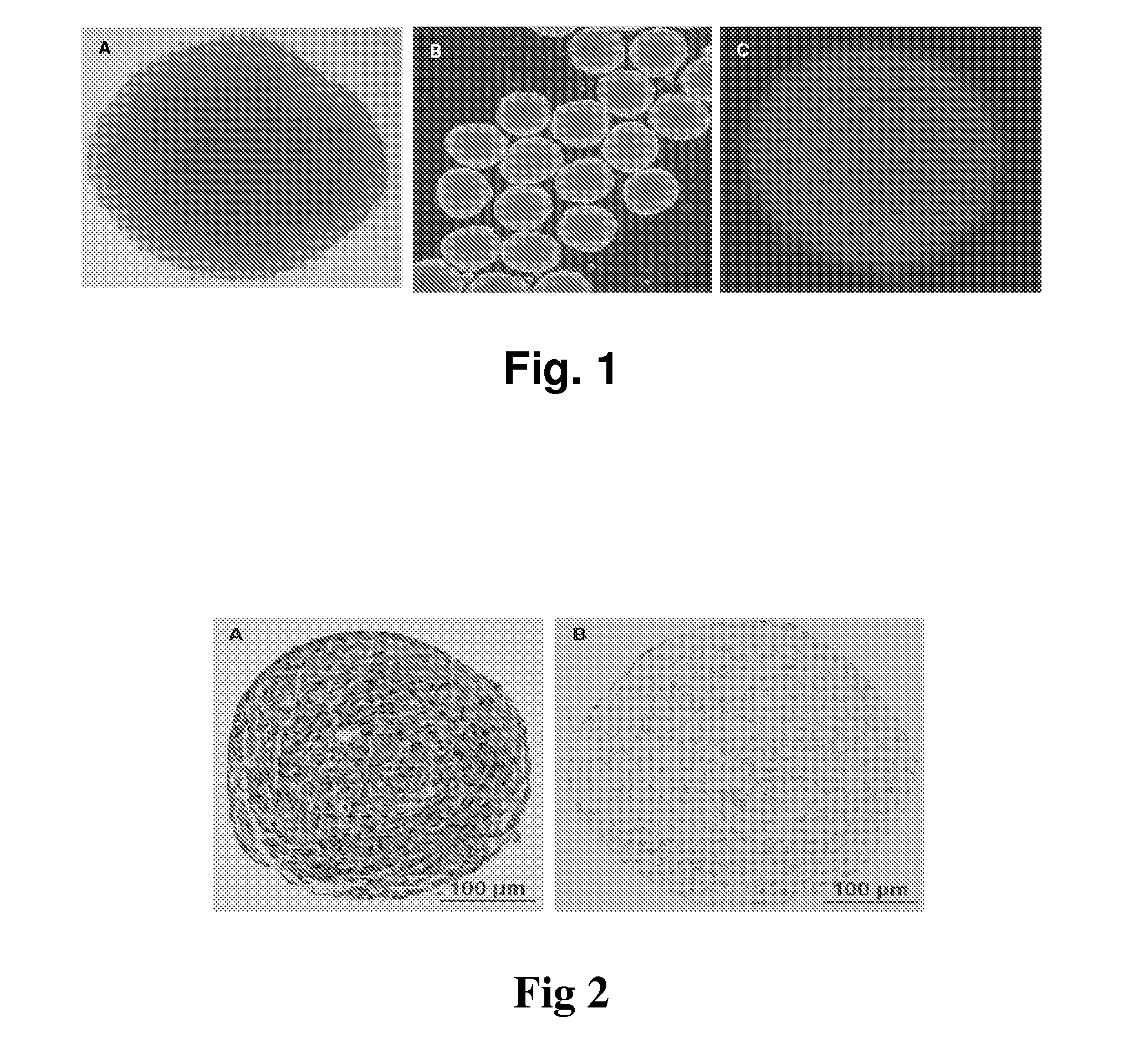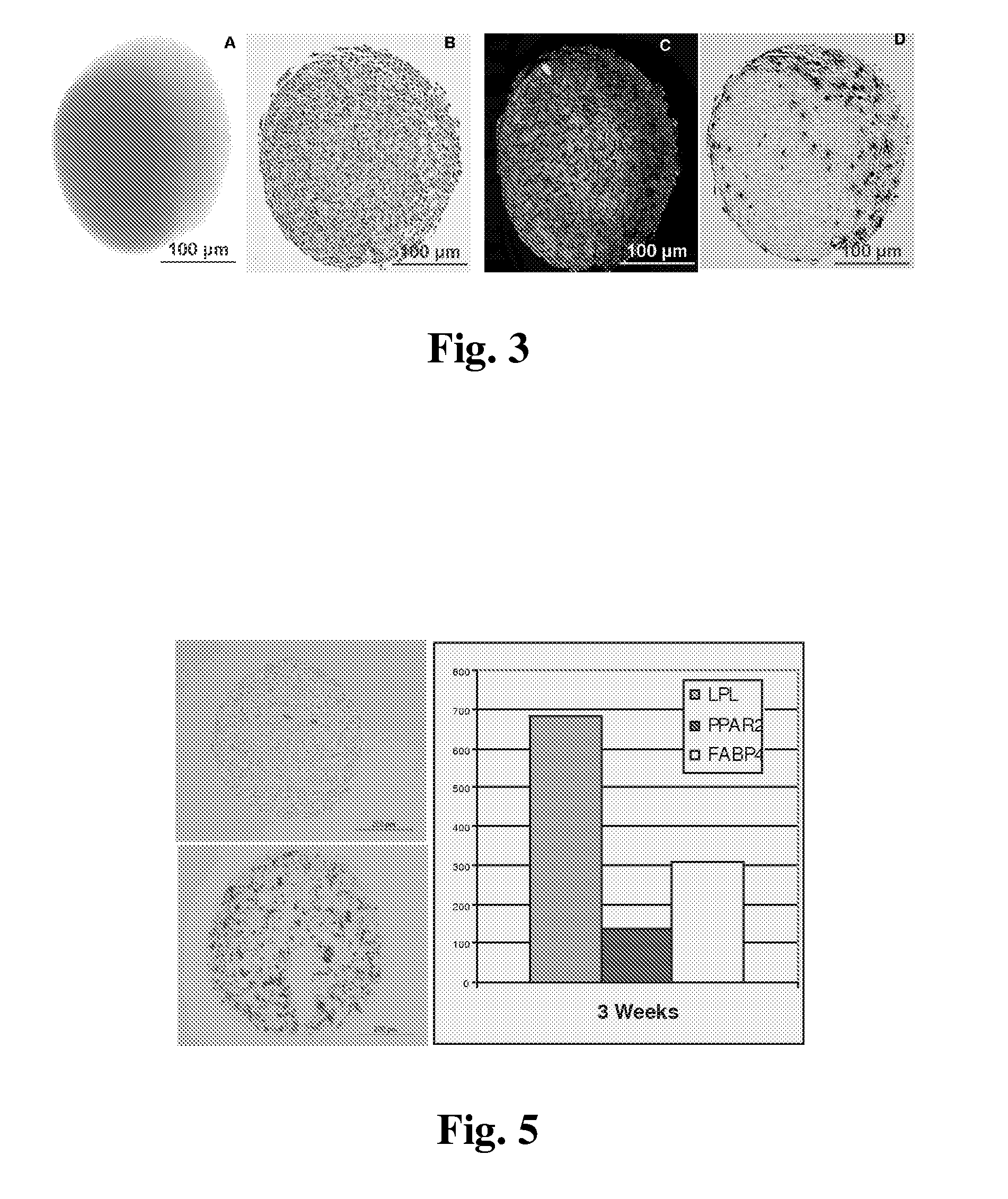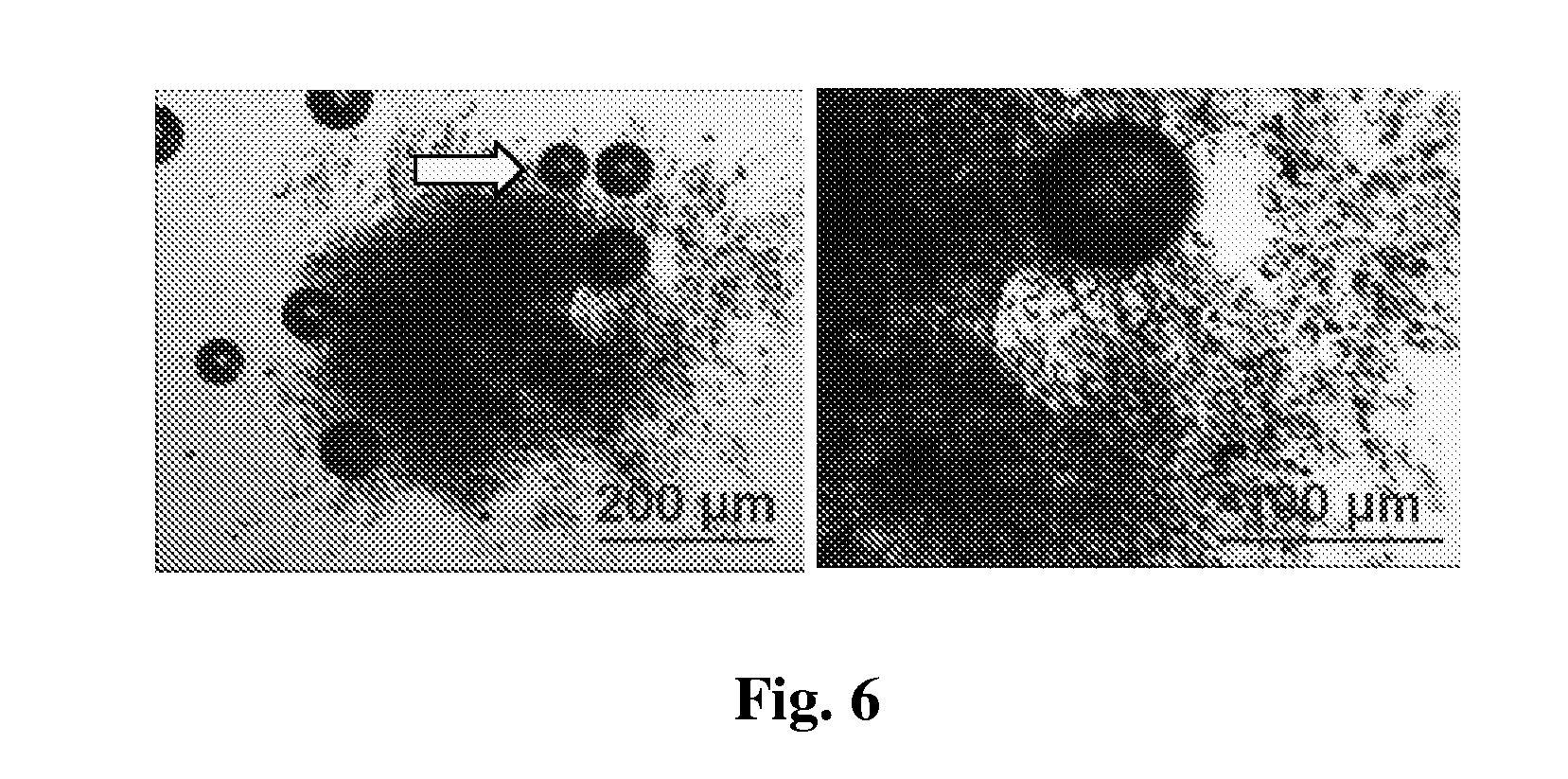Compositions and methods for modular soft tissue repair
a soft tissue and modular technology, applied in the field of modular soft tissue repair, can solve the problems of scarring, high cost, and high cost, and achieve the effects of tissue integration, effective regeneration of adipose tissue, and superior in vivo engraftmen
- Summary
- Abstract
- Description
- Claims
- Application Information
AI Technical Summary
Benefits of technology
Problems solved by technology
Method used
Image
Examples
embodiments
[0136]Methods useful for the practice of the invention which are not described herein are also known in the art. Useful methods include those described in WO 2007 / 030652 (PCT / US2006 / 034915), WO 2007 / 019107 (PCT / US2006 / 029686), WO 2007 / 089798 (PCT / US2007 / 002572), and WO 2008 / 060374 (PCT US2007 / 021432), the methods of which are hereby incorporated by reference.
[0137]We have developed reproducible methods of culture that support the 3-dimensional (3-D) organization and maintenance of human ASCs in a self-generated extracellular matrix. We refer to these multicellular aggregates as “MAs”, and in the setting of adipose tissue engineering, view them as “Modular Adipogenic Constructs”. In essence, each aggregate is a ‘micro-organoid’, or ‘regenerative nidus’ that can initiate and participate in tissue repair and replacement.
[0138]Human ASC MAs self-organize and survive in a variety of culture conditions, including defined serum-free conditions. In addition, human ASC MAs demonstrate profic...
example 1
[0148]ASC Isolation, Culture Expansion and Characterization
[0149]My lab has extensive experience with the isolation, culture, and differentiation of human adipose-derived cells (Katz et al. 2005; Parker et al. 2007;Tholpady et al. 2005; Tholpady et al. 2003). We also have excellent experience in the use of flow cytometry to characterize ASCs (Katz et al. 2005).
example 2
[0150]Characterization of Human ASCs Formulated as 3-Dimensional Multicellular Aggregates (MAs)
[0151]An overview of methods and findings related to 3-D ASC culture includes the following:
[0152](1) ASCs can organize into 3-dimensional multicellular aggregates (MAs) in a controlled, reproducible fashion (FIGS. 1, 2); and
[0153](2) they can be maintained for prolonged periods in culture and display robust survival capacity even when grown in serum-free conditions.
[0154]Methods: To reproducibly form cell aggregates, ASCs (500-50,000) were suspended in the appropriate medium to achieve desired concentrations. Small volumes (15-30 μl) of the concentrated cell suspensions were then pipetted onto culture plate covers in discrete droplets. The culture plate covers were then inverted, creating “hanging droplets”. After 24-72 hours in hanging drop culture, the MAs were then transferred to a range of media in either Ultra Low Attachment (ULA) wells / plates (Corning) for suspension culture, or int...
PUM
 Login to View More
Login to View More Abstract
Description
Claims
Application Information
 Login to View More
Login to View More - R&D
- Intellectual Property
- Life Sciences
- Materials
- Tech Scout
- Unparalleled Data Quality
- Higher Quality Content
- 60% Fewer Hallucinations
Browse by: Latest US Patents, China's latest patents, Technical Efficacy Thesaurus, Application Domain, Technology Topic, Popular Technical Reports.
© 2025 PatSnap. All rights reserved.Legal|Privacy policy|Modern Slavery Act Transparency Statement|Sitemap|About US| Contact US: help@patsnap.com



